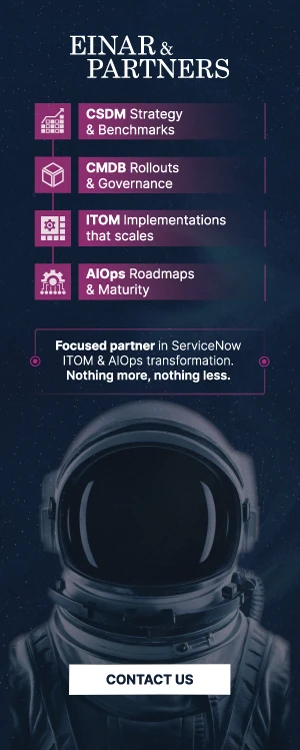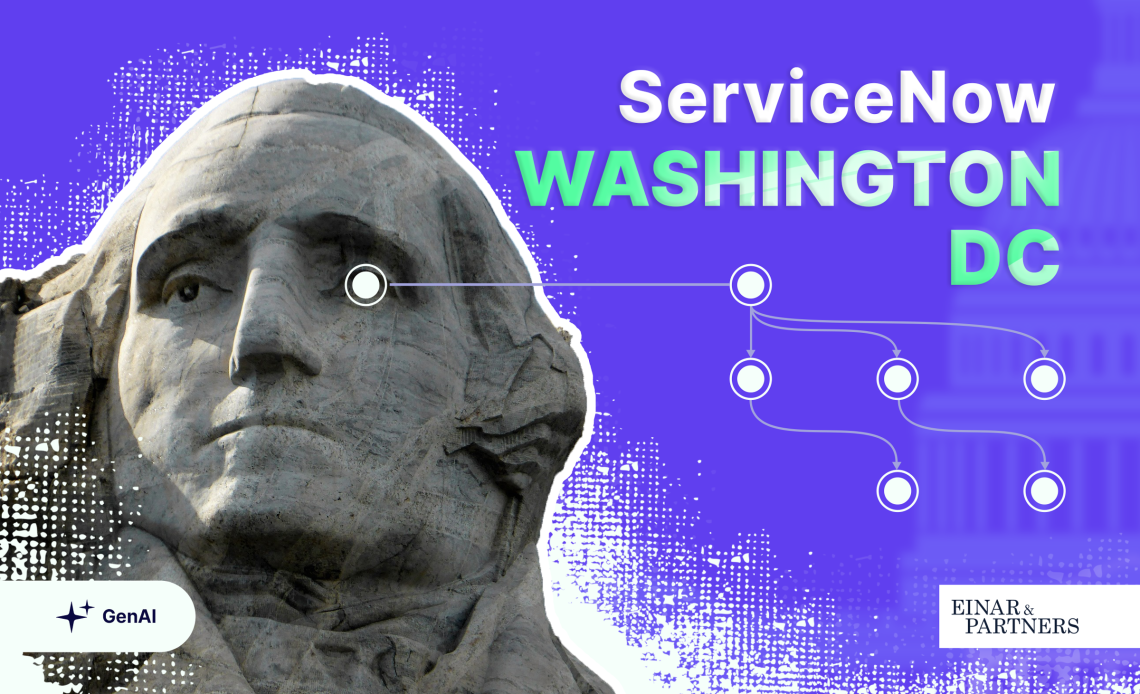
In the fast-paced environment of 2024, with AI on everybody’s mind, ServiceNow continues to impress with its ability to trailblaze. True innovation is rare, whereas most SaaS release cycles tend to include fresh updates, but ultimately with marginal improvement. How often do releases include features or changes to product portfolios that impact an organization’s operating models in a deeper sense? Rarely, most would say – but one thing is sure – the Washington DC release of ServiceNow is one of them.
The ITOM suite is becoming the core
Being a product engineer is tough, and embedding new features into a platform does not only require a backlog of demand and development pipelines. It also requires a strong relationship with the clients and community using the product. It demands engineers’ creativity to find headspace where innovation is allowed to grow.
Most SaaS companies, ServiceNow included, tend to be in a mode of “optimization” between the releases, where products are refined and minor features/improvements get embedded in each release. Finding the rare state of launching more ground-breaking updates is difficult.
There is currently a lot going on in the ITOM space. The industry is booming, and IT Operations is central to virtually every part of the business. ITOM is no longer just treated as a separate product with an IT budget; instead, ITOM is becoming part of the core across the entire enterprise.
The shift in attention is also reflected in the latest ServiceNow release called “Washington DC”, where the ITOM product portfolio is getting some truly impressive updates.
New dependency map combining both Service Mapping & Discovery
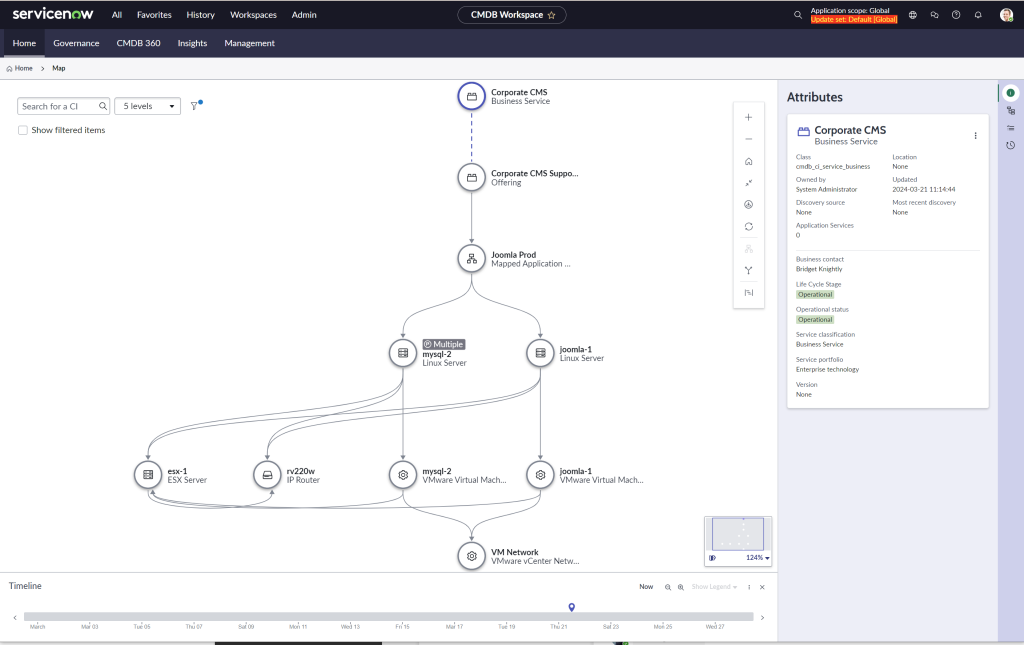
Washington will see the new combined user-interface for viewing CMDB relationships expanded to the Service Mapping workspace. Historically, the dependency view has starkly contrasted with the Service Mapping user interface. Starting from Washington, Service Mapping Unified Map is more natively embedded, also in the Service Mapping workspace.
The unified map combines CSDM Objects, Service Maps, and discovered/integrated objects from the CMDB in one view. The updated user interface also integrates changes, incidents, alerts and many more data points to be easily accessible. Additionally, the Service Mapping timeline is available.
Service Mapping and MID Affinity – improved intelligence
Traditionally, Service Mapping has auto-selected MID servers for performing a top-down discovery based on IP ranges. Unfortunately, this may have resulted in the wrong MID-server being selected during the scan of service maps for large organizations with overlapping IP addresses. There simply hasn’t existed any refined method to tell Service Mapping which MID-servers to specifically use, until Washington that is.
In the latest release, MID server affinities can be created with Service Mapping to improve the selection criteria of MID servers. Leaving the administrators more in control based on the two following criteria’s:
- Identifying subnetwork MID Server based on the last horizontal Discovery run and reuses it for Service Mapping
- Network Location – using a combined method of subnets and locations set on Discovery schedules to select the correct MID-server
Top-Down Service Mapping with Agent Client Collector
One of the most significant pieces of news is the Agent Client Collector starting to support top-down Service Mapping.
ServiceNow as a company continues to invest in the agent-based approach for ITOM. The agent is lightweight, requires fewer firewall openings and can be reused across the entire product portfolio. For example, agents have a combined ability to monitor events, collect metrics, and perform discovery jobs.
Service Mapping and ACC a fickle mistress until now
Historically, using the agent-based approach has resulted in sacrificing functionality and flexibility in the Service Mapping product. Performing top-down, on-prem discovery hasn’t been possible with agents. Additionally, leveraging the TCP/IP connections for traffic-based Service Mapping has also been difficult.
A big argument for using agentless Discovery is that you get the most bang for the buck when using Service Mapping. At least until now.
In the previous Vancouver release, agents received the ability to execute horizontal Discovery patterns. But now in ServiceNow Washington DC, top-down versions of patterns can also be executed on the agents. Additionally, hybrid approaches of using agentless and agent-based models for Service Mapping can now be combined. In a single Service Map, you can have parts of the data through agentless methods and other parts through agent-based methods.
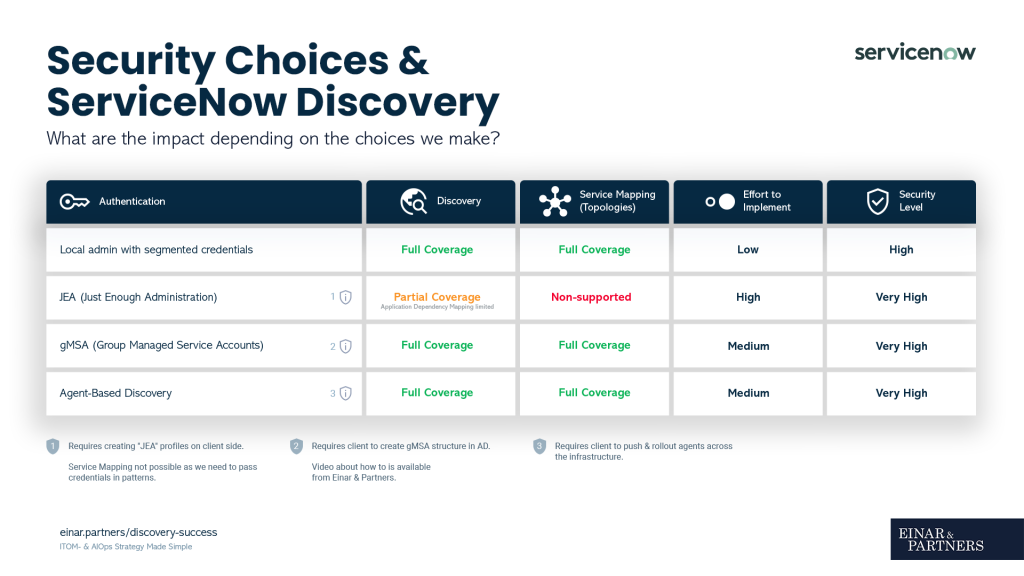
Finally executing patterns on Discovery agents
The fact that we can now use agents for top-down Service Mapping is perhaps the most significant update to the Service Mapping products in years. The question from a long-term perspective is, how will the market respond – and how will the future position of agentless Discovery be affected? Time will tell.
Simplify alert descriptions with GenAI in Event Management
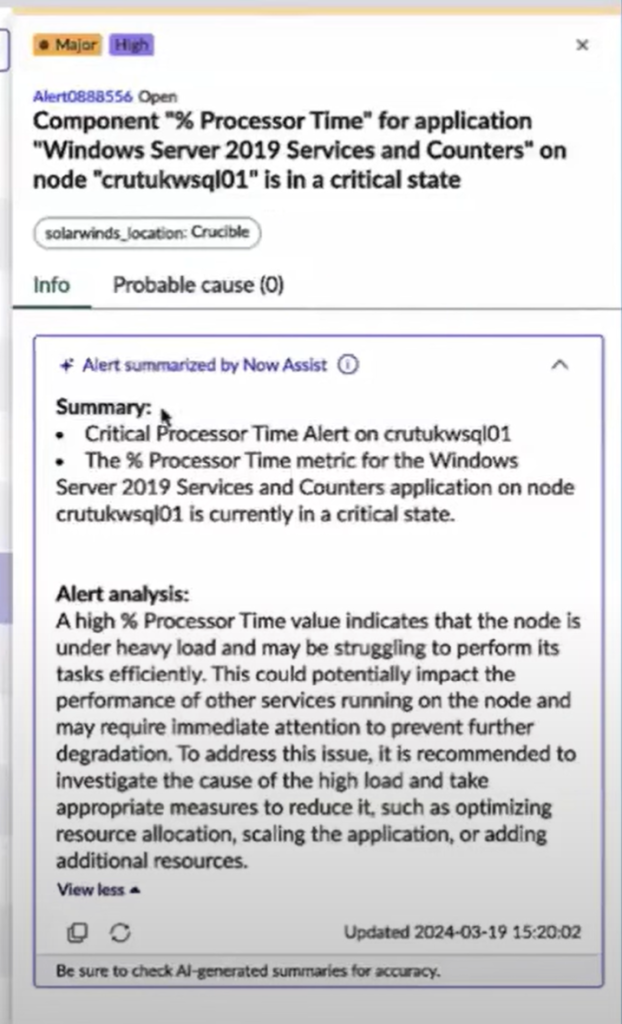
GenAI is finally finding its way to AIOps and IT Operations. You may think GenAI is a hype and buzz with few applicable use cases. And in some respects, that might be true. However, this particular use case deserves attention. One of the fundamental challenges for engineers and service desks is interpreting alert data and descriptions and create meaning out of it.
Shift left in the service desk with simplified alert descriptions
A core philosophy in Site Reliability Engineering and observability is to “shift left”. This means allowing more junior resources greater autonomy and resolving more issues before they get escalated to the second or third line. For a more junior engineer, alert descriptions can be daunting to understand and act upon. However, in the Washington release, we now see a great example of the embedding of GenAI into Event Management. More specifically, The Now Assist can help support staff in simplifying alert descriptions to make more sense and to use more “plain English”.
LLMs and Event Management
“How valuable can the text prompts from GenAI really be in an alert?” you might think to yourself. Quite helpful, it turns out. ServiceNow does not use OpenAI for this functionality; instead, it has built specific LLMs (large language models) tailored to alert and observability data. Through alert simplifications, SRE’s and other engineers can now convert cryptic alert descriptions to more simple English to zoom in on issues and what the actual root cause is.
The introduction of GenAI will likely transform the operating models of monitoring teams from a long-term perspective. Less writing of SOPs and knowledge-base articles, more real-time data interpretation with simple output in English. Neat!
Assign alerts more intelligently with team-based conditions
Assigning alerts to the right team sounds like an easy task. However, for global companies and enterprises, finding the team responsible for an alert can be tricky. According to Forrester, more than 73% of enterprises have more than 10 monitoring tools (on the lower end of the scale). Each monitoring tool tend to have its own group of subject matter experts and engineers.
With the help of the latest Washington DC release, alerts can be dynamically assigned based on conditions such as the connector source as well as CI ownerships. For example, if the alert comes from Zabbix, it would be automatically assigned to the appropriate Zabbix team. Or if the group owner of an impacted CI is specified, the team is dynamically assigned and dispatched to the group owner of the CI.
What is neat is that each team can configure and apply their own custom logic, event rules and more. Ultimately, this allows for a more controlled way of routing alerts without relying on heavy customizations.
Innovation Lab – Event Management Apps
The innovation lab is also offering some quite interesting store apps, starting with the Washington release. Examples include:
- Blast radius with alerts and alert tags – understand the impact better between alerts without the need for a perfect CMDB
- Alert Escalation Rules – escalate and promote alerts easier to an incident, text message and more
- Alert enrichment and business context – use alert enrichment instead of complicated event rules to extract business context for alerts to enrich the data
Summary – what the Washington DC release means for ITOM
The Washington DC release for ITOM contains some truly innovative new features. It is clear that the ITOM product portfolio is becoming more central to the ServiceNow ecosystem and client base. Apart from the updates we’ve covered above, there are also numerous updates related to Visibility patterns (such as docker, Kubernetes), Cloud Acceleration (tag governance) and many more areas.
Ultimately, the biggest game-changer is the utilization of agent-based Discovery for Service Mapping. This new feature has enormous potential to be leveraged by thousands of clients, as the visibility package is the most common ITOM subscription.
With the introduction of GenAI into the Event Management capabilities, organizations can free up many hours from senior engineers and instead allow more junior staff to work and interpret alert data – potentially saving not just money but reducing the TOIL on the more senior staff.
Overall, the market is thrilled about the roadmap and journey that ITOM is on. With more user-friendly UI, more integrated experiences and simplifications – the ITOM Product team at ServiceNow continues to impress and shows an ability to listen to the community and clients.

